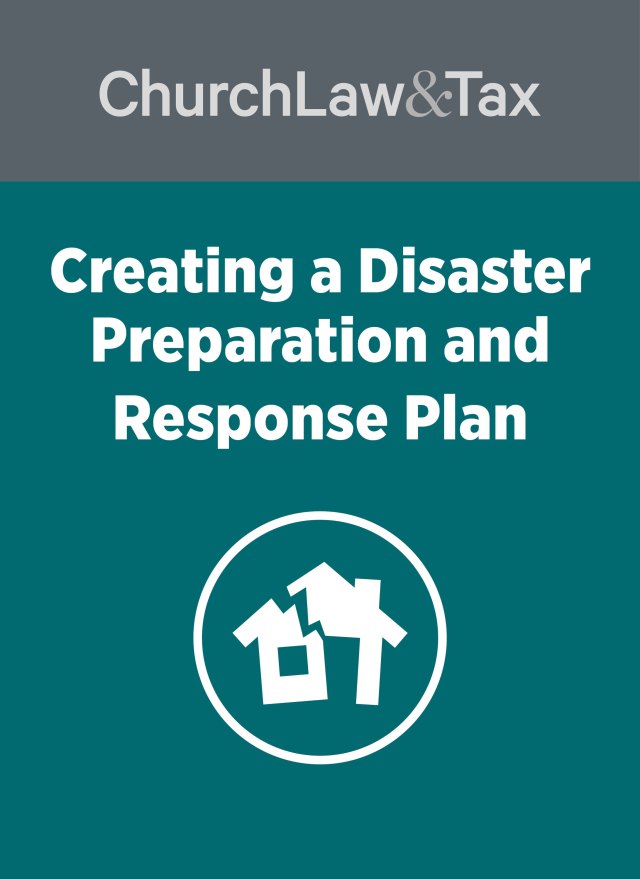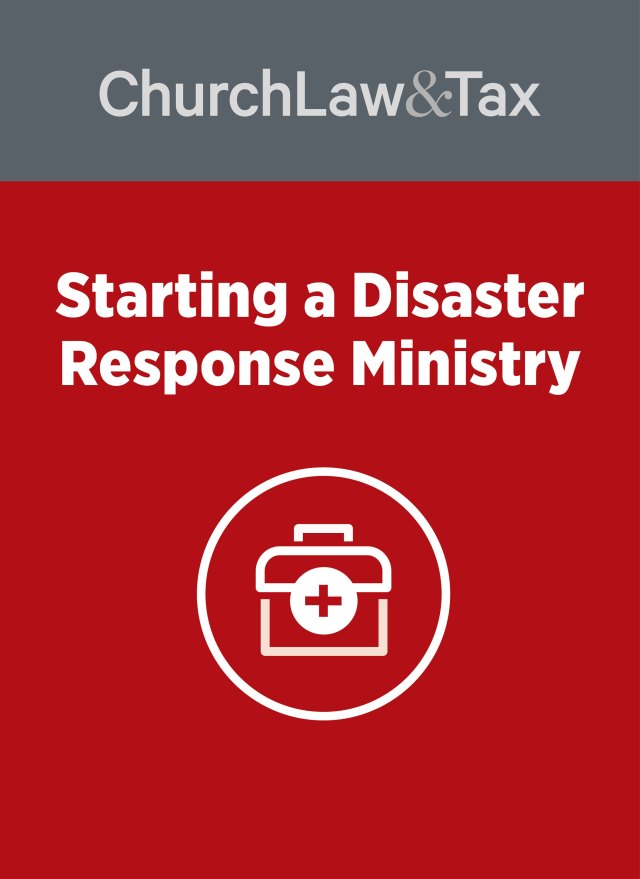You rarely expect an emergency to affect your congregation, but realistically, an emergency situation can happen at any time. Whether it’s a natural disaster or a man-made situation, you should be prepared with a plan of action, outlined and practiced ahead of time.
The Need for an Evacuation Plan
As part of emergency and disaster preparedness plans, your facility should have an evacuation plan.
Reasons for evacuation vary greatly—from fire to severe weather, violence, hazardous materials, or gas leaks. Since it’s impossible to anticipate exactly what type of emergency your ministry may face, your evacuation plan should be simple enough to carry out quickly, specific enough to be helpful, and versatile enough to apply to a variety of situations.
Putting Your Plan Together
Start the process by evaluating your equipment and systems to determine if you have sufficient warning and communications tools. Identify those items in your plan.
Equipment and Systems to Consider:
- Detectors such as smoke alarms, carbon monoxide alarms, weather radio, etc.
- Warning systems/signals throughout the facility that include both audible alarms and flashing lights.
- Communications tools: overhead public address system and/or walkie-talkies in classrooms and other key areas.
- Flashlights in classrooms and other key areas.
- Evacuation maps, posted visibly throughout the facility and specific to each area.
Next, identify essential roles and how these roles can be filled regardless of who is in the facility at the time of the event.
Roles to consider:
- Who will monitor the situation: weather radio, news, etc.?
- Who has the authority to order an evacuation?
- Who will activate the warning systems/signals (alarms, overhead announcements, messages by walkie-talkies, etc.)?
- Who is in charge of leading groups from different areas of the building (and what happens when these individuals are not available or not present)?
- How will you know who is in your building at any given time, and how will you account for everyone (in order to ensure everyone has moved to safety)? Who will do head counts before and after evacuation?
- Are there critical systems that need to be shut down? If so, who can/will be responsible?
- Who will contact and talk to authorities (police, fire, medical, etc.) and respond to the media?
- Who has the authority to call the “all clear”?
Along with evaluating your equipment, systems, and roles, you will need to create evacuation maps and identify emergency exits, routes, and destinations.
Maps, Emergency Exits, Routes, and Destinations:
- Create maps that include the building and grounds and post throughout the facilities. Ensure that emergency exits and routes (at least two per area) are clearly marked. Designate areas for people to assemble both inside and outside—depending on the reason for evacuation. Outdoor gathering areas should be at least 150 feet away from the building.
- Remember that not all evacuations will mean sending people outside. In certain instances it’s safer to remain inside. For instance, during a tornado, you will want people to assemble in an internal room away from windows.
- Designating specific destination locations will enable you to account for people and help you know who might be missing.
A Word about Emergency Codes
During an emergency, it’s important to let people know what is happening. Leadership will need to know the situation so they can properly direct others. In general, people need to know where to go and what to do. Designating and using simple key words like “Code White” for a winter storm or “Code Medical” for an injury or illness might be helpful. These codes and locations can be communicated by overhead public address system, walkie-talkies, or both.
When you identify codes for specific kinds of incidents—fire, severe weather, medical, hazardous material, violence, etc.—you should assign a desired evacuation method. By calling a code, it can enable your leadership as well as others to know how to evacuate.
Other Things to Consider
Keep in mind there may be people with special needs in your facility at the time of an emergency. Special needs could include anything from hearing or visual impairment to physical limitations, and even to those who do not speak English. How will your warning systems (sound, light, overhead communication) and evacuation maps and routes affect them?
How will your plan be affected when members of leadership are not in the building? Will those who are in the building know what to do and where to go?
Review and Practice
It’s a good idea to have a trained emergency services professional review your plan to help identify weaknesses, suggest improvements, and ensure compliance. Typically your local fire, police, and emergency medical services organizations will help review your plan at no charge.
Once you have developed the plan, you should review, practice, and update it with your staff and volunteers at least annually.
Training and Practice:
- Include a review of the plan in your orientation of all new staff members and volunteers. Be sure everyone knows how to use the various detection systems, alarms, and communications tools.
- Do tabletop and walk-through exercises with staff at least once a year.
- Couple evacuation training and retraining with other efforts, such as half-day child care training sessions.
- Involve your congregation. Though the thought of having an evacuation drill on Sunday morning might seem daunting, it would actually be a good test of your systems, equipment, plan, and staff. Consider holding a drill either after service or between services. Consider holding both an internal and external evacuation. You might alternate these drills every six months. Use the exercise as a way to encourage your members to develop their own evacuation plans for their homes.
- Update your plan at least once a year and after each exercise or drill based on what you learn. Communicate updates to staff and volunteers.
Beyond the Evacuation Plan
The evacuation plan is just one element in your emergency “tool kit.” Yet it’s an essential one. Even the best evacuation plan has limitations. You will need additional emergency and disaster preparedness plans to actually carry you through various situations.
This article was adapted from BrotherhoodMutual.com. Used by permission.
To learn more about keeping your church safe, purchase the downloadable resource Planning for Emergency Evacuations, available on ChurchLawAndTaxStore.com.





